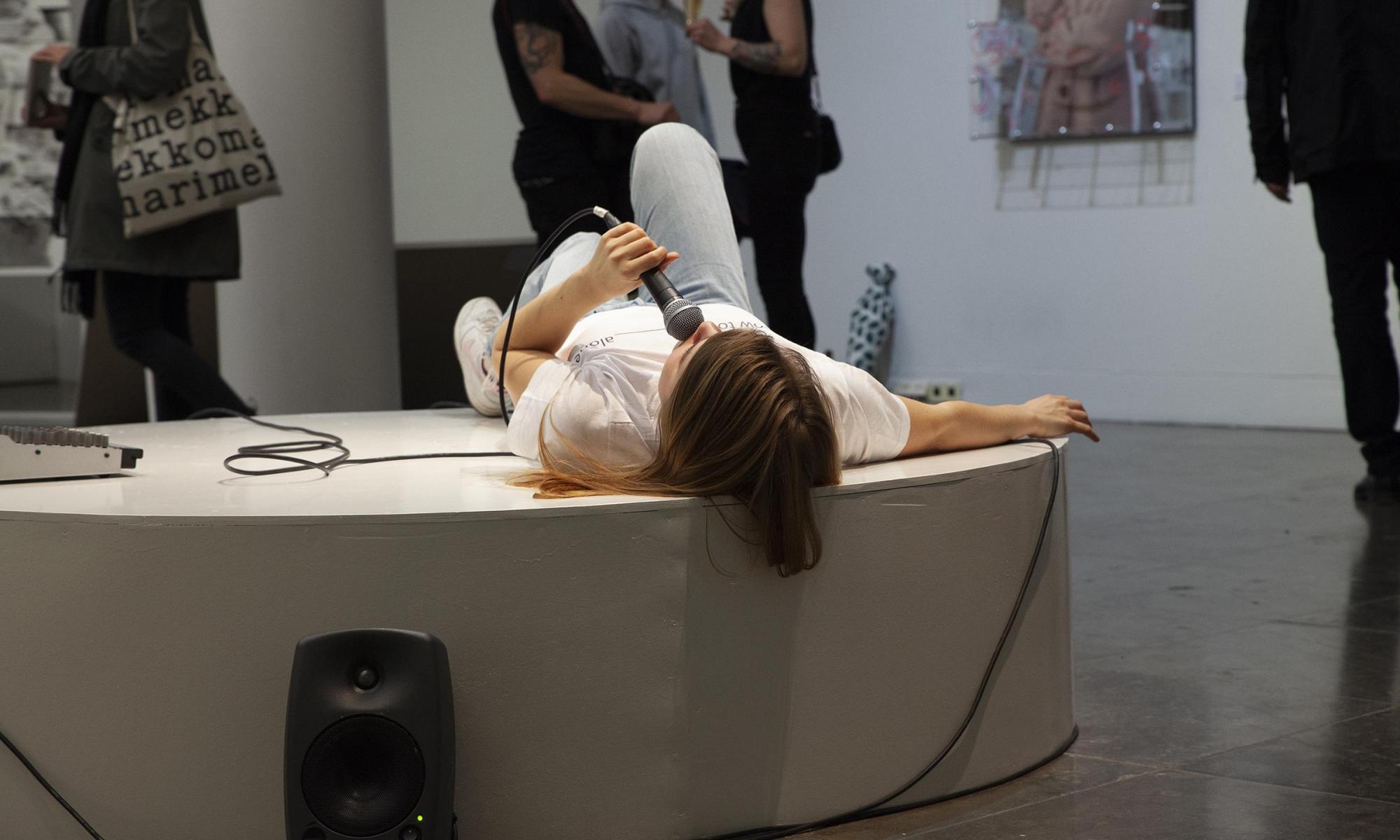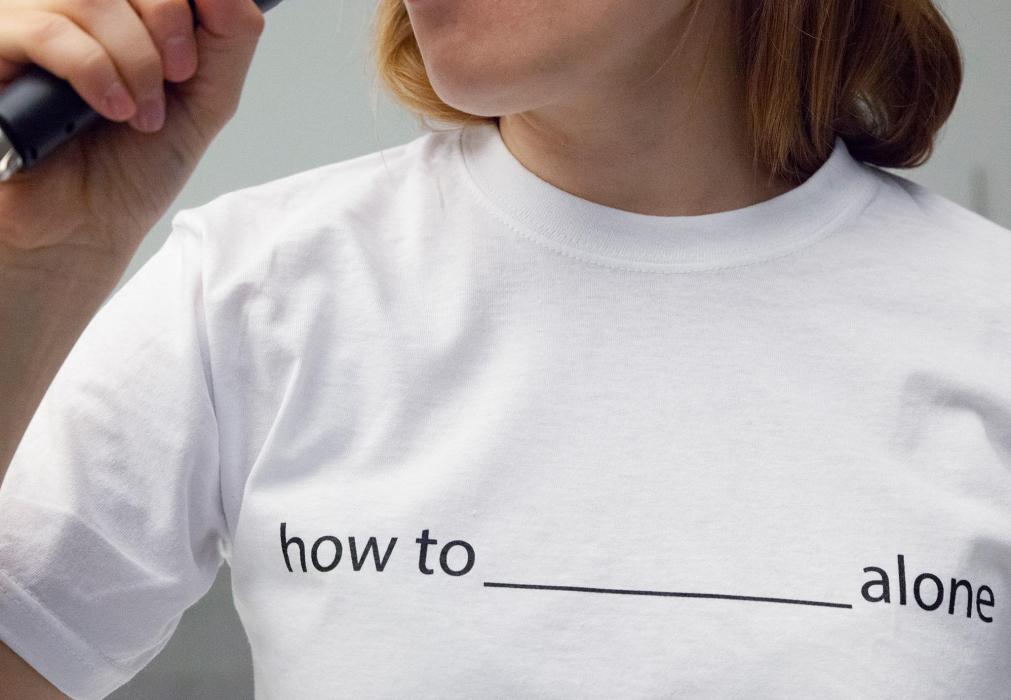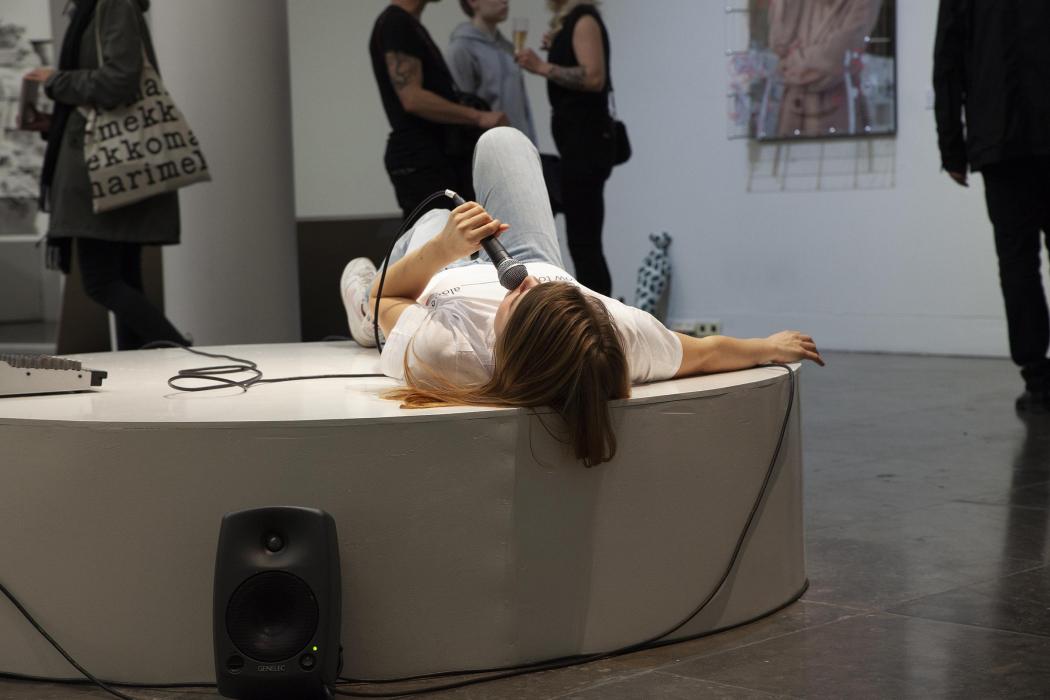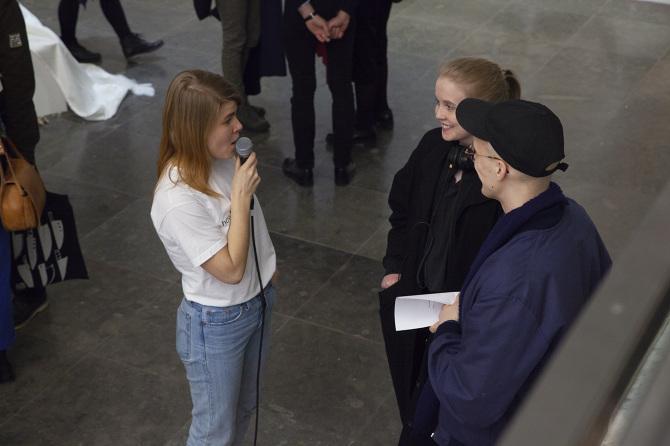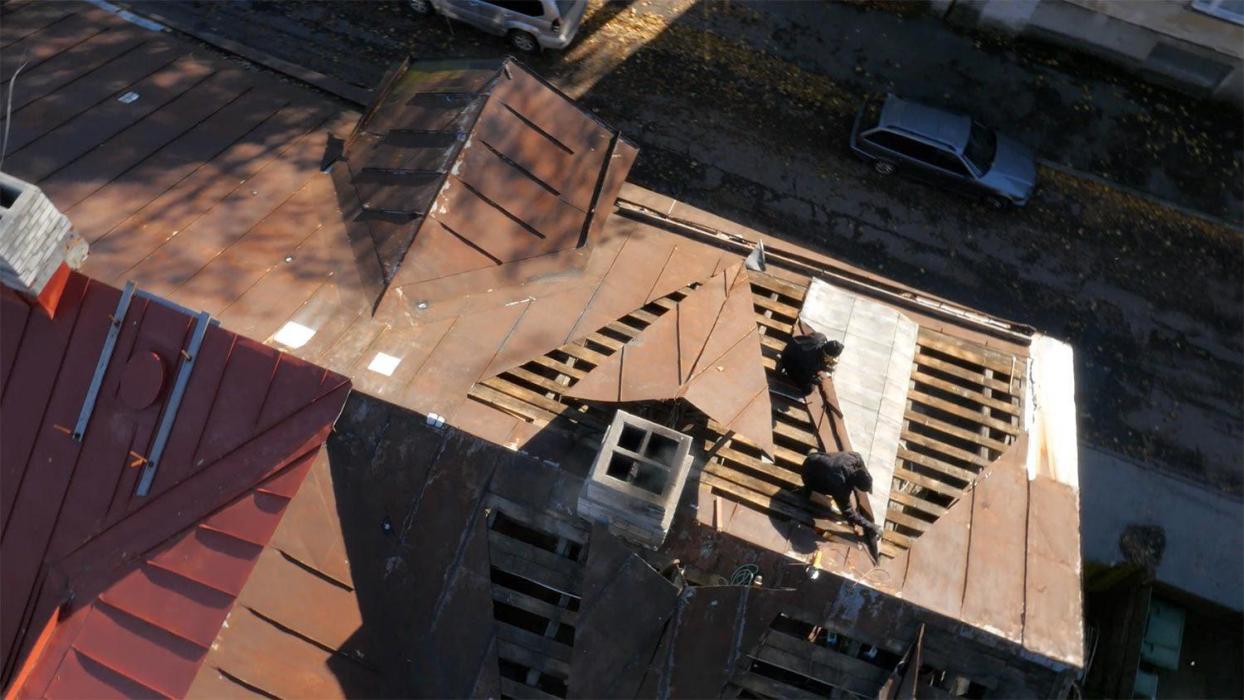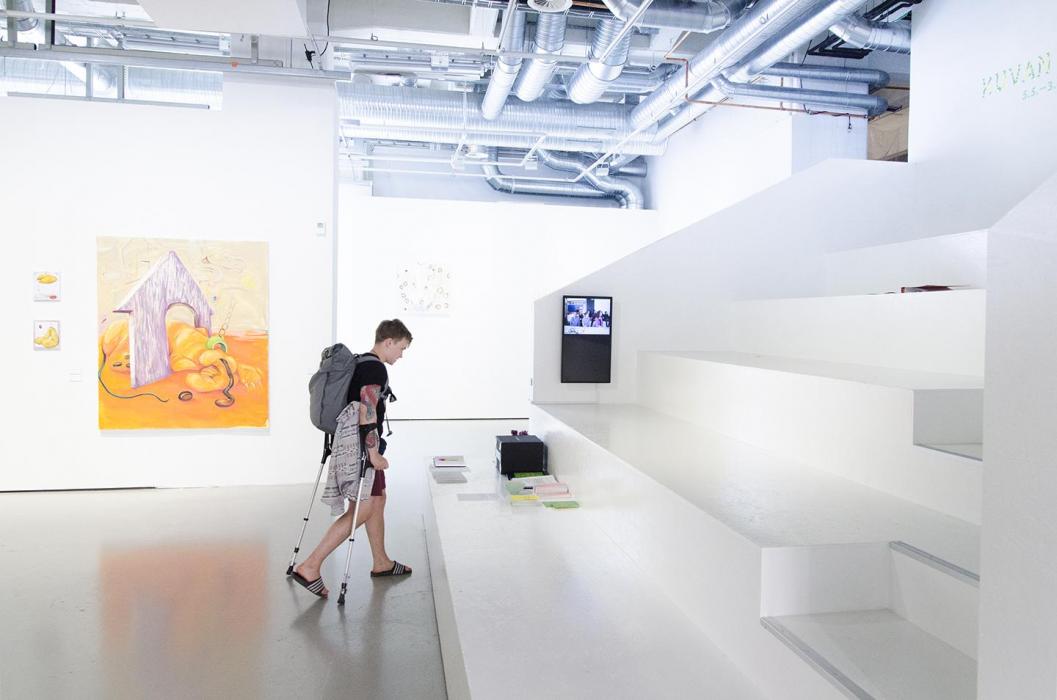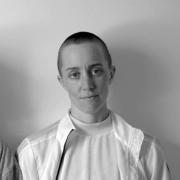Helsinki
I think my love of [dependency on] bureaucracy began with my love of [dependency on] institutions. The fixity of them. The way they produce and distribute power. Maybe my relationship with institutions somehow counteracts the extreme precarity of being an artist. Their bigger than me-ness.
I moved to Helsinki in January, buoyed by the sail of the Academy of Fine Arts. I have been wanting to move to Europe for several years, but it turned out I was unwilling to take the plunge without being tethered to an institution. Because of certain histories, alliances, and agreements, the fact that my mother was born in London means my Masters education is funded by the Finnish government.
Finland’s education system is internationally narrativised as a world leader. In my own narrative, I claim it as one of the reasons I chose to study here. In a book about Finland at an airport bookstore, I read that Finland is 100% literate. I wonder how anything can be 100%. Or if this is the best measure of goodness. A teacher friend describes to me that the objective of the Finnish education system is to ‘produce socially responsible individuals’.
Henri
One of the more unique resources available to me through my studies is a Pastor employed by my school. Henri. He is introduced to the new students at our orientation alongside the school counsellor. Henri is from the Lutheran church, like a significant proportion of the Finnish population. I am secular but curious about Henri and his role within the educational institution.
I have met with Henri on several occasions to talk about my projects. At the time of our first meeting, I was making an artwork involving becoming a godparent, so we talked about social duty, and speculated about varying cultural understandings of responsibility. For example, Finnish society assigns significant power and responsibility to the state.
We talk about institutions such as the family, the Church, and the government—the way these institutions are related, and the way that individuals work for them. In one of our conversations Henri talks about his role as an official marriage celebrant, and how during this ceremony, when he asks the couple if they agree to be bound together in marriage, he becomes a representative of the state. He emphasises that, for this very brief moment, he takes on the role of a judge of the law, as he authenticates a legally binding statement. I like the idea of a switch being flicked, eyes glazing over as the machine of the legal system governs his body. He tells me that, in Denmark, Church salaries are paid by the government.
Henri and I also talk about how something internal becomes external, and vice-versa. About how one makes a commitment externally, through legal and social structures, and internally, through the will, the faculty within us that enables deliberate action. American artist Andrea Fraser said that we have internalised the institution—that institutions exist through their social performance.[1] I guess it’s the same as what American philosopher and theorist Judith Butler said but with the word institution instead of gender.[2] And I wonder what institutions I have internalised, and brought with me to Finland. The institutions of American Feminist and Art Theory, for starters.
Anne
Each year in the Spring (‘Kevät’), the Academy of Fine Arts holds its Masters graduate exhibition, Kuvan Kevät. This year, Anne Naukkarinen presented a project titled How to _______ alone, (2018). The work consisted of a circular stage, AV equipment, a durational performance, and merchandise. Over several days of the exhibition, Anne sweetly and melodically sings the phrase ‘how to work alone’ to whoever else is there while she ‘works’ the stage, the room, the microphone. She is wearing a T-shirt which is also available for purchase from the exhibition attendant. She is making eye contact, and the microphone cable is long enough for her to move freely through the space, and sing directly into my face.
How to _______ alone externalises the largely private (often completely internal) act of artistic labour. In doing so, it directly addresses the ‘institution’ of Fine Art. That strong, romantic institution of the heroic solitary artist, that is perpetuated through structures including the graduate exhibition.
As the title suggests, this is a solo performance. But we are never really alone. And this is what interests me about Anne’s work. A friend once described how she imagines all the latent corpses that are inside her own living body. Reanimated when she performs certain actions. Anne brings (with her, and to life) the institution of Dance, having completed her undergraduate degree in this discipline. A discipline with a methodology of working with others. Collectively. Collaboratively.
Living abroad has made me think a lot about being alone. Not lonely alone. But independent alone. In performing the collective through the individual, Anne proposes another institution altogether—a start-up funded by T-shirt sales, produced in real time. So is this the only alternative to established institutions? Being entrepreneurial? Is independence linked solely to capital?
Flo
In February this year, I took the two-hour ferry from Helsinki to Estonia. Estonia is a haven for Finnish holiday-makers who savour their relative economic position of advantage. An indirect effect of their respective national legislation means Finns customarily export alcohol back to Finland, where its sale is highly regulated. A collective, unofficial, work-around.
While I was there, I visited Flo Kassearu’s House Museum in Tallinn. An independent institution run by the artist from within her family home. The building the museum occupies is a large freestanding wooden house, built by her relatives in the early 1900s and returned to Flo’s family after the Soviet era. I know this because Flo explained it to me as she introduced me to the collection in her hallway.
The museum contains a collection of Flo’s works, which specifically engage with the site. Practical problems like repairing the roof, planning the garden, and servicing a hole in the fence are solved creatively and exported as artworks. I was interested in Flo’s resourcefulness, using the materials at hand. Flipping them like economic units.
Flo’s museum is cute, as in, sweetly ironic. It reproduces many museological tropes, including the didactic panels, the library, and the gift shop. A red velvet sash cordons off the space where the artist sleeps, eats and bathes. Flo constantly shifts between subject, object, narrator and director as she hosts us. This embodied history is captivating and makes me think about what [national] identities we export. And moreover, how we author our representation and our narratives. And how this reflects our ideology.
Hami
As I move through these situations, states, and institutions, I think about another project from this year’s Kuvan Kevät by Hami Bahadori. As a part of Safety and Possible Hazards (2018), Occupational Health and Safety Manager, Jyri Pulkkinen, led a public walk-through of the graduate exhibition. Participatory work always highlights labour conditions, and I was slightly surprised that Jyri chose to wear formal attire rather than the expected hi-vis. Aesthetics aside, the tour posed new frameworks for viewing, assessing and evaluating the works in the exhibition.
This institutional infrastructure reflects both physical and cultural approaches to safety and fear. Bureaucracy comes up again as a methodology for navigating these ideas and systems. And although Hami speaks through the voice of the institution itself, I hear the subtext loud and clear: What does the prevalence of these systems tell us about our mentality? Who is being afforded these protective measures?
Hami also co-facilitates a number of reading groups, one of which gathers regularly at the Helsinki international airport to conduct their conversations. Going to a space to undertake an activity which the space is not designed for is a radical act, and highlights the actions happening there. The airport is another kind of institution entirely, where the performance of national safety (deportations) intersects with individual safety (random explosives testing). I think about the invisibility of institutional structures, and my privilege to access and navigate them with so few barriers.
I look at these individuals performing their institutions, and return to the discussion with Henri about various attitudes to responsibility. Responsibility to a family, or a country. I recently learned that in Finland, one of the purposes of marriage, by definition, is the ‘preservation of society’. I reflect on the way individuals take on the responsibility of institutions, and of histories. And on the responsibility that comes with privilege. Our duty to take opportunities that present themselves to us.
[1] Andrea Fraser, ‘From the Critique of Institutions to an Institution of Critique’, Artforum, September 2005, XLIV, No. 1, pp. 278–283.
[2] Judith Butler, ‘Performative Acts and Gender Constitution: An Essay in Phenomenology and Feminist Theory’, Theatre Journal, Vol. 40, No. 4 (December 1988), pp. 519-531.

